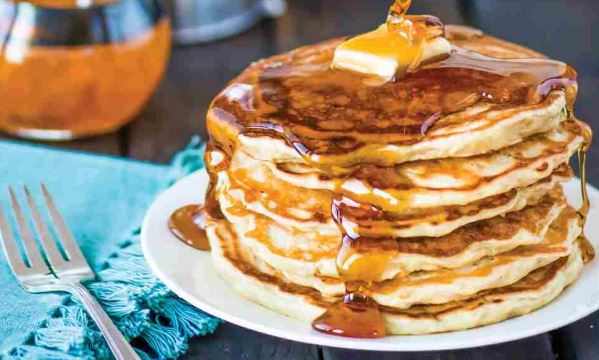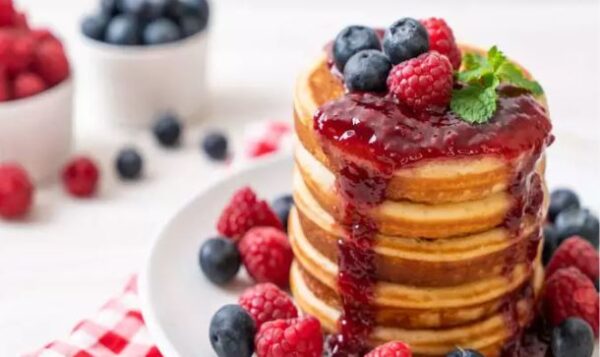Lifestyle
5 common mistakes to avoid if you want a perfect pancakes

There’s nothing better than settling into a deliciously comforting breakfast.
Specifically, a breakfast that involves pancakes! From a stack of thick and fluffy buttermilk pancakes to light and delicate ricotta pancakes to a luxurious Dutch baby pancake — they all fit the bill. Just don’t forget the syrup.
The key to great griddle pancakes, however, is technique. Here are some tips for getting it down just right and avoiding some common mistakes.
1. Overmixing the batter
You know that urge you get to keep mixing that batter until the lumps are gone and it’s totally smooth? Fight it as hard as you can. In fact, avoid it entirely.
When you mix the wet and dry ingredients together, gluten starts to develop. And the more you mix the batter, the more the gluten continues to develop. So what happens? The result of overworked batter is a stack of tough and chewy pancakes instead of the light and fluffy ones you were probably dreaming about.
→ Follow this tip: Mix the batter just until the wet and dry ingredients are combined, and there are no more visible wisps of flour. The batter will likely be lumpy, and that’s okay.
2. Not resting the batter
You’re so close to a blissful pancake breakfast, it seems like a cruel joke to wait a little longer. It’s a small step, but a crucial one, and one that should not be skipped over. No matter how hungry you are.
The resting period, which can range from five to 30 minutes, depending on the recipe, plays two roles. The gluten that was activated during mixing rests and relaxes, and also, the starch molecules in the flour absorb the liquid in the batter, ultimately giving it a thicker consistency.
→ Follow this tip: Good things come to those who wait. And, yes, that saying also applies to pancakes. It might seem trivial, but resting the batter is an important step that gives the gluten time to relax and settle down. In other words, it makes for pancakes that are more soft and tender, and this is especially important with crepes and Dutch baby pancakes. Use this time to clean up, set the table, or prep your toppings.
3. Not starting with a hot-enough pan
A sign of a good pancake, in my opinion, is one that is delicate and buttery-crisp around the edges with a soft, fluffy interior. But if you start with a pan that’s not quite hot enough, instead of forming a lightly crisped exterior, the batter will start to soak up the butter or oil that’s in the pan and get greasy.
→ Follow this tip: Give your pan some time to get good and hot evenly. Before adding the batter the pan, the butter or oil should be very hot but not smoking. If you’re not quite sure if the pan is hot enough, don’t be afraid to make a small test pancake first.
4. Setting the heat too high
High heat doesn’t cook pancakes faster, it cooks them unevenly with burnt outsides. The pan needs to be hot, but make the mistake of setting the temperature too high and the bottoms are likely to burn while the inside remains raw and doughy.
→ Follow this tip: Setting your stove to the right temperature is one of the keys to great pancakes. The pan needs to be hot, but that doesn’t mean the heat needs to be cranked up to high. For a well-cooked pancake with a golden-brown outside, and an inside that’s soft and cooked through, keep the heat set to medium.
5. Flipping your pancakes too soon and too often
You might be tempted to flip once the bubbles start to appear, but it’s not quite time. Give it another minute.
Pancakes should be flipped once, and only once, during cooking. And as long as you didn’t flip them too soon, you won’t need to flip them any more than that. Flipping pancakes too many times causes them to deflate, losing some of that wonderful fluffy texture.
→ Follow this tip: Wait to flip the pancakes when the bubbles on the surface burst, and not a second sooner.







